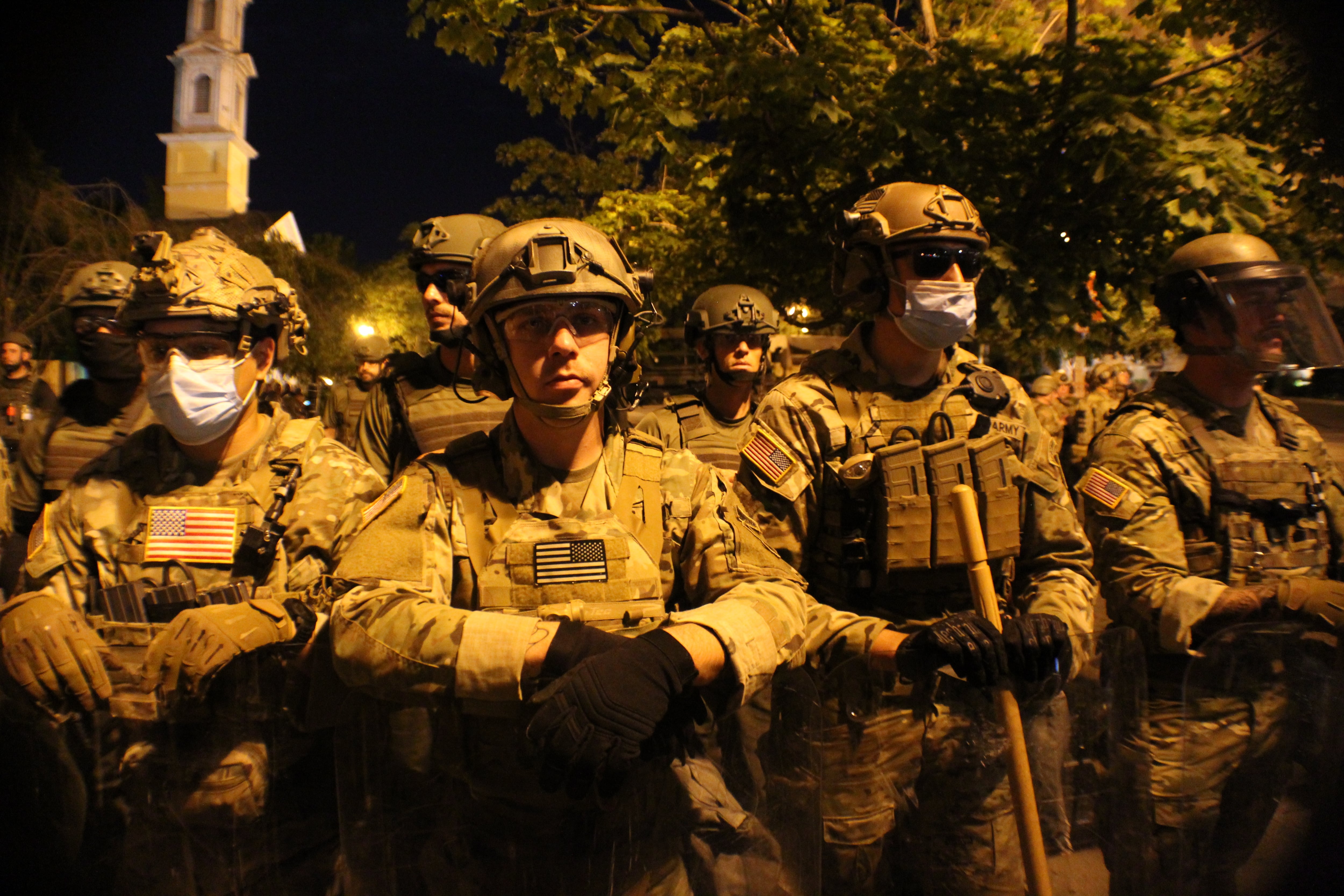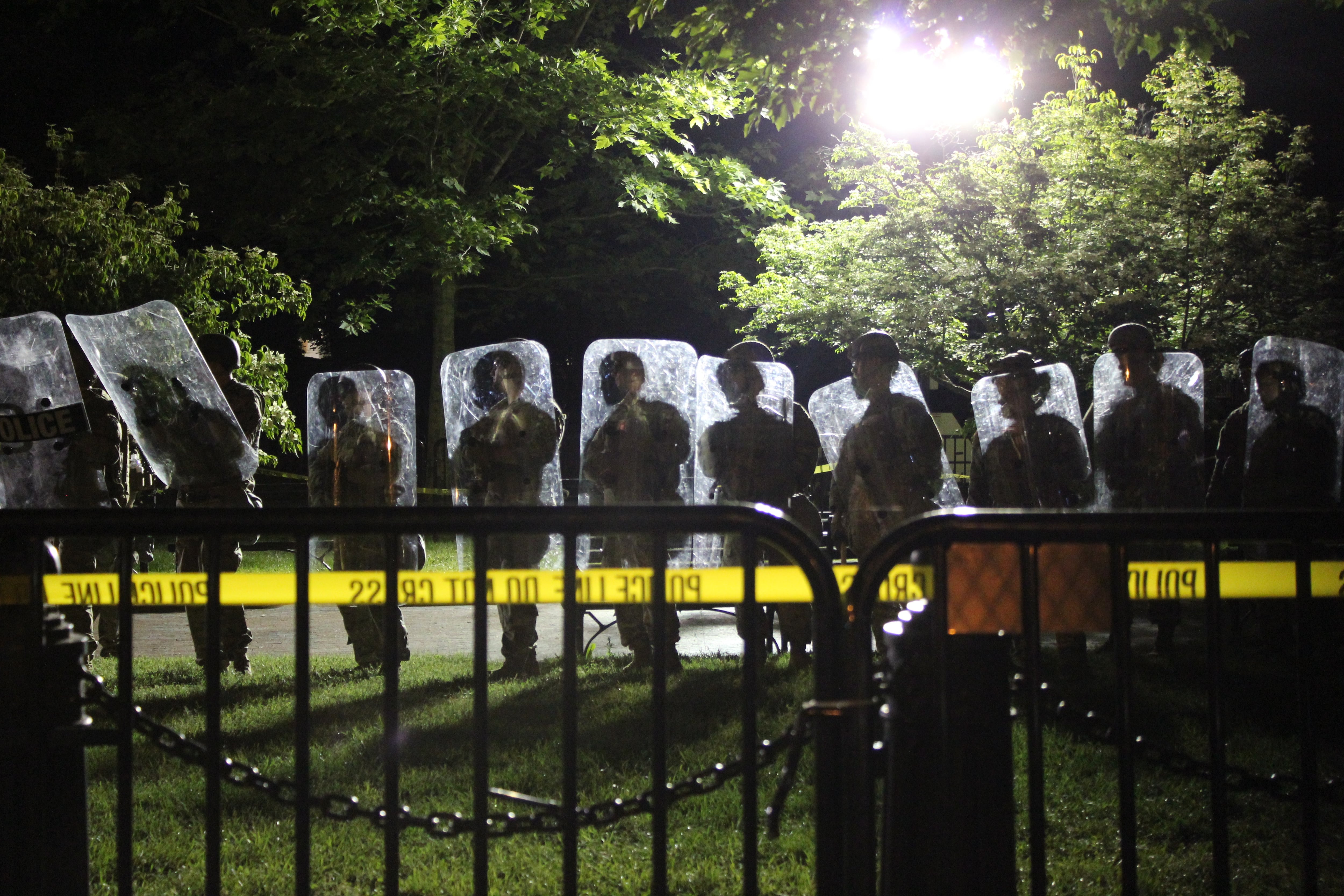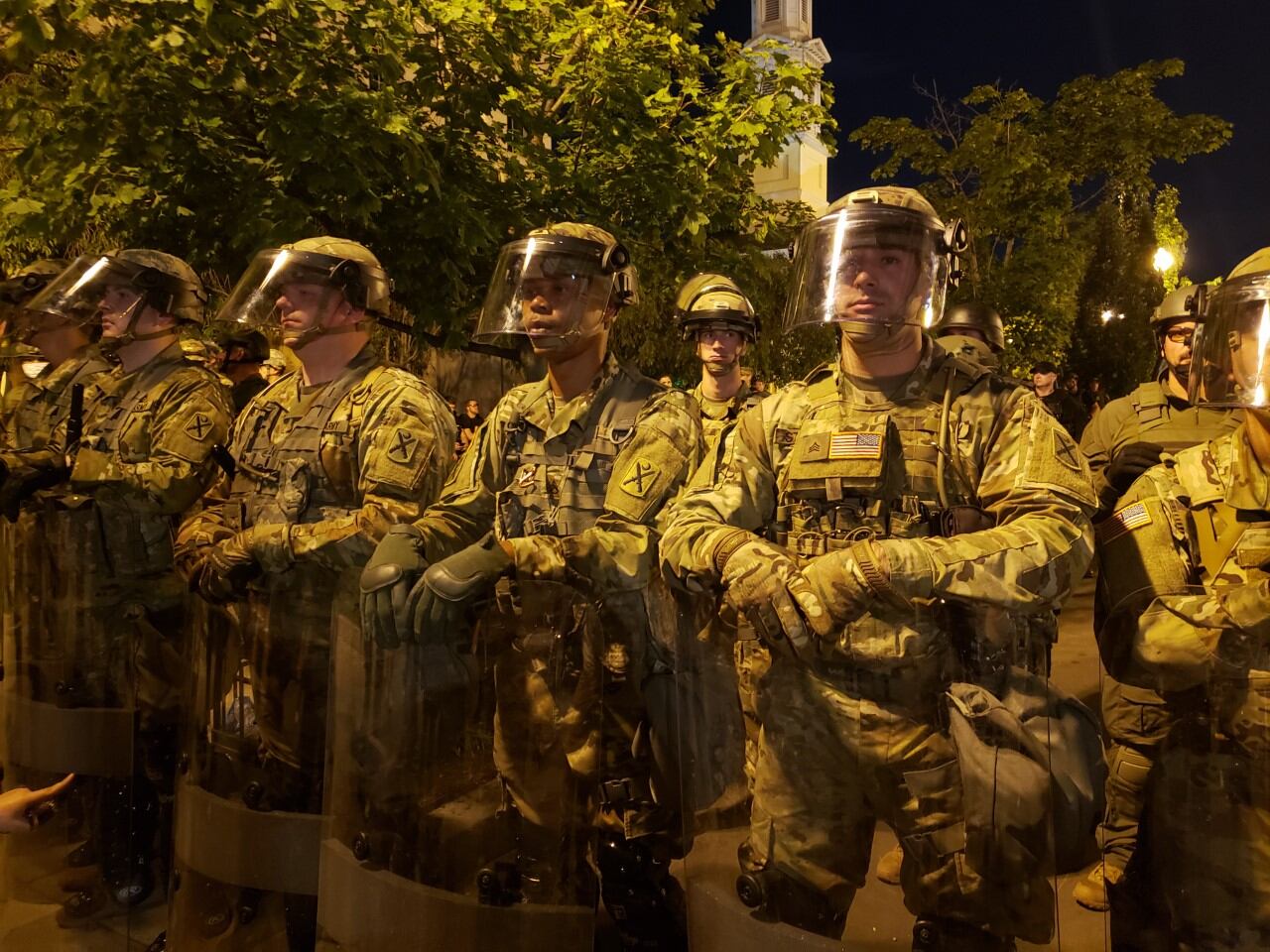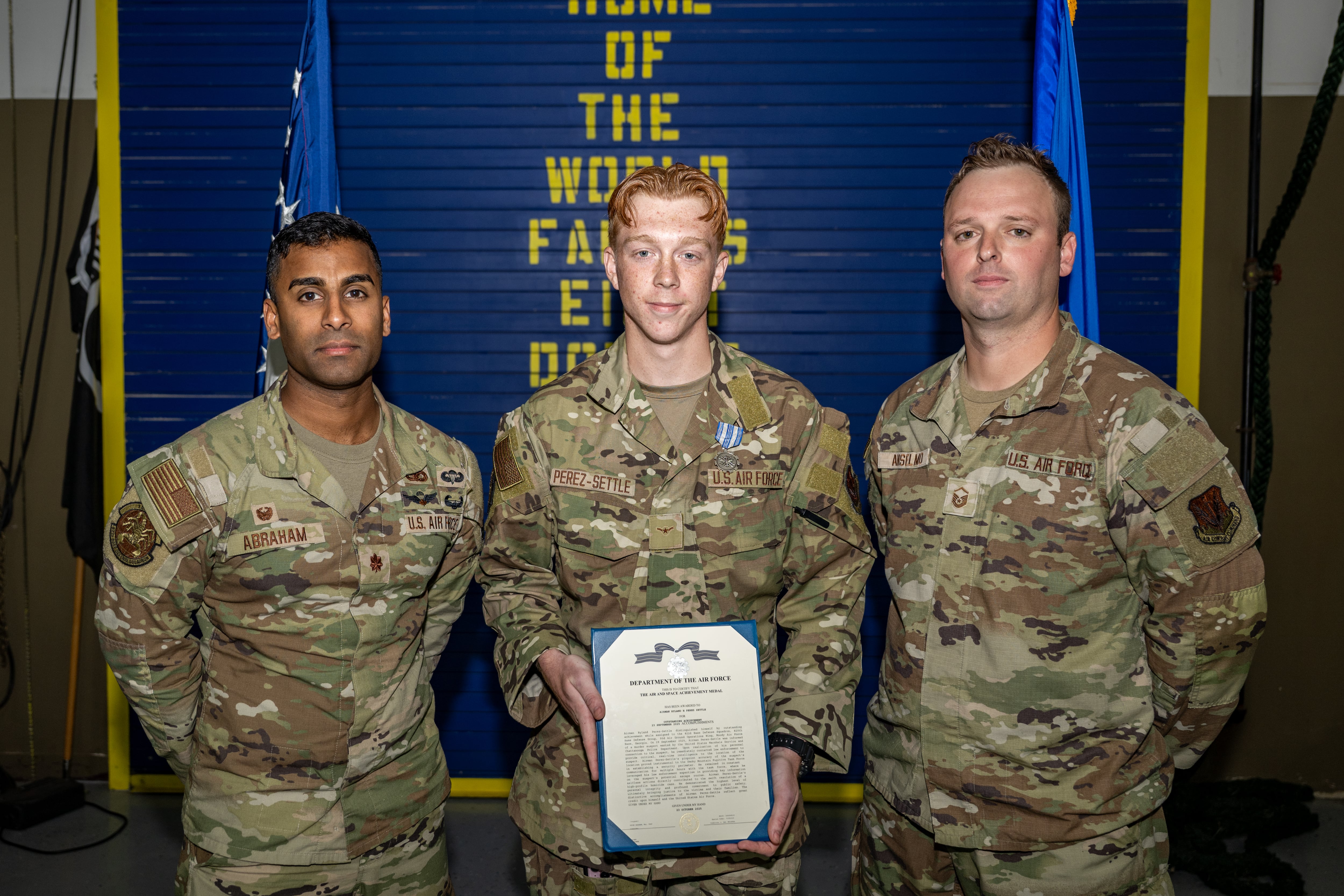The mayor of Washington, D.C., is asking that the president remove all military and federal law enforcement from the city, following several nights of peaceful protests.
President Donald Trump said Monday he was "dispatching thousands and thousands of heavily armed soldiers, military personnel, and law enforcement officers” to tamp down on protests and riots in D.C. over the weekend. Since then, the protests have gone on without incident and D.C. Mayor Muriel Bowser has ended the District’s state of emergency.
“The protestors have been peaceful, and last night, the Metropolitan Police Department did not make a single arrest," Bowser wrote in her letter to the president. “Therefore, I am requesting that you withdraw all extraordinary law enforcement and military presence.”
Bowser also wrote that the “additional, unidentified units” have added to the confusion during protests by not wearing “identifying insignia.”
Trump responded to the mayor’s request over Twitter by calling her “incompetent” and said she is “now fighting with the National Guard, who saved her from great embarrassment. If she doesn’t treat these men and women well, then we’ll bring in a different group.”
Some of the roughly 1,200 Guardsmen sent to D.C. were quartered in hotel accommodations, like the Marriott Marquis. Those hotels had preexisting contracts with the city, according to National Guard Bureau spokesman Army Master Sgt. Michael Houk.
“Out of respect for existing agreements those facilities have with the city government, those service members have relocated," said Houk, who deferred further comments to D.C. officials.
The White House did not immediately respond to a request for comment sent Friday. The mayor’s spokespeople also did not respond to queries.
Military Times observed the protests in-person on Monday, Tuesday and Wednesday. The demonstrations in front of the White House were largely peaceful. Crowd dispersal techniques, like pepper spray, were only used briefly late Tuesday night. Demonstrators lingered in front of National Guard troops and their police counterparts well into the early morning hours each night.

National Guard troops in front of the White House were easily identifiable Wednesday night, as they were closer to protesters and their patches were easily seen. Many of those personnel were from 19th Special Forces Group, a Guard unit headquartered in Utah.
The presence of Special Forces personnel, the vast majority of whom were support troops and not Green Berets, caused a flurry of rumors and misinformation over social media.
Houk, the National Guard Bureau spokesman, previously told Military Times the reason 19th Group soldiers “were selected and sent is because they were already prepared for deployment.”
“They were chosen for expedience, not their skillset,” he added.
Soldiers from 19th Group weren’t just guarding the president’s residence, however. The unit posted pictures of its troops scrubbing graffiti and and picking up trash in downtown D.C. on Wednesday, stating that they “woke up early today to help clean the nation’s capital after a night of protests.”
RELATED

Airmen from the National Guard were also present. They came from a wide array of career fields, including fighter jet crew chiefs and SERE instructors, according to insignia they wore and discussions with Military Times.
Many federal agencies also sent units to the city, including the Federal Bureau of Investigation, the Bureau of Alcohol, Tobacco, Firearms and Explosives, the Drug Enforcement Administration, and Immigration and Customs Enforcement.
One of Bowser’s concerns was the presence of “unidentified federal personnel patrolling the streets.” While National Guard units wore patches and were distinguishable by their uniform accoutrement, many federal police were harder to sort out. Some reportedly declined to tell those who asked what agencies they worked under.
Bowser noted in her letter that identifying insignia is mandatory in D.C. She said federal police are “inflaming demonstrators” and “adding to the grievances” of those protesting for change following the death of George Floyd, a black man who prosecutors say was murdered by a Minneapolis police officer who had his knee on Floyd’s throat.

“This multiplicity of forces can breed dangerous confusion, such as when helicopters are used in a war-like tactic to frighten and disperse peaceful protesters,” Bowser added in reference to a Lakota helicopter that was seen flying low and hovering over crowds on Monday, ostensibly to disperse them.
D.C. National Guard commander Maj. Gen. William J. Walker has directed an investigation into the incident.
“I hold all members of the District of Columbia National Guard to the highest of standards. We live and work in the District, and we are dedicated to the service of our nation,” said Walker.
In a key incident that inflamed tensions on Monday afternoon, protesters were hit with tear gas as Trump and a cadre of officials — to include Defense Secretary Mark Esper and Joint Chiefs Chairman Army Gen. Mark Milley — made their way to St. John’s Episcopal Church near the White House. The building had been damaged by rioters a day earlier.
Law enforcement aggressively forced protesters back for what appeared to be a photo op in front of the church. Hours later, Esper, Milley, Army Chief of Staff Gen. James McConville and Army Secretary Ryan McCarthy visited National Guard troops in D.C.
In ensuing days, Esper attempted to distance himself from the incident at St. John’s. Esper also took a stance against using the Insurrection Act of 1807 to send active duty military personnel into U.S. cities, a move the president was considering.
Some of the roughly 1,600 active duty forces brought from Fort Drum, New York, and Fort Bragg, North Carolina, to military bases in the D.C. region this week have since been ordered to return home, and none were brought into the city itself to deal with the protests.
As of Friday morning, nearly 84,000 National Guard troops were activated for domestic operations across the country, according to National Guard Bureau officials. The number surpasses the roughly 51,000 Guardsmen activated during the 2005 Hurricane Katrina response.
Kyle Rempfer was an editor and reporter who has covered combat operations, criminal cases, foreign military assistance and training accidents. Before entering journalism, Kyle served in U.S. Air Force Special Tactics and deployed in 2014 to Paktika Province, Afghanistan, and Baghdad, Iraq.





